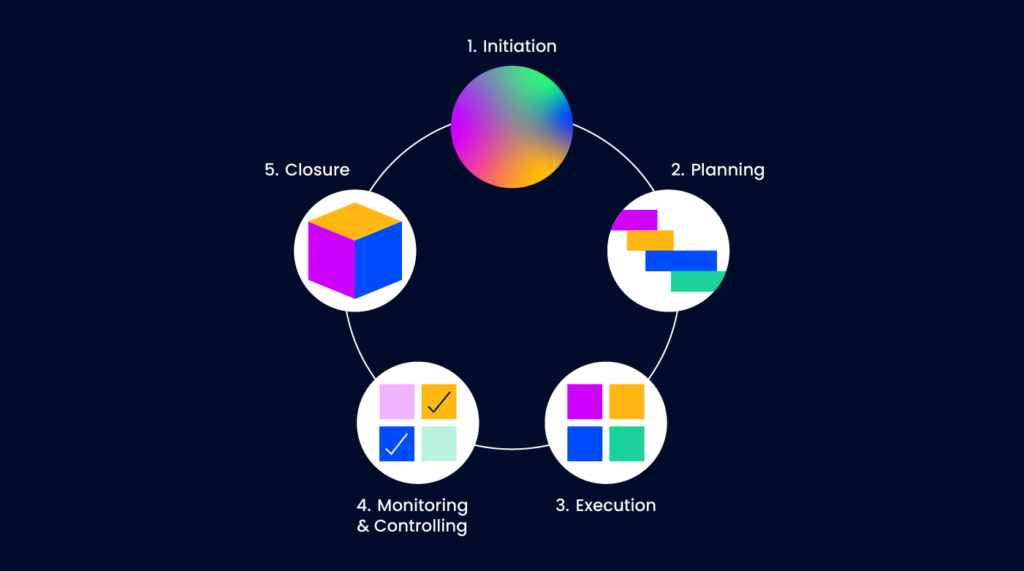All projects have a beginning and an end. They go through the same project management steps of initiation, planning, and execution. Projects are temporary efforts, born to create value, and when that value has been delivered, the project ceases to be. This cycle of project birth, maturity, and closure is known as the project life cycle, or project management life cycle.
I'm going to explore each phase of the life cycle and how you can apply it to your projects today and future projects. A key aspect of successfully managing projects within the project life cycle is being equipped with the right project management software tools or apps that can support each phase of the project.
What Is The Project Life Cycle?
The project life cycle is the phases of a project that are necessary for the effective delivery of that project. It dictates the order of processes and phases a project goes through as it's completed, and describes the high-level workflow of the project.
The PMI (Project Management Institute) has defined these five project management process groups, or project management phases, which come together to form the project life cycle.
- Project Initiation
- Project Planning
- Project Execution
- Project Monitoring & Controlling
- Project Closure
The PMI took what’s really common sense and called it the project life cycle. The PMI methodology is the de facto standard for project delivery, which you can find in their 370 page 7th edition of the Project Management Body of Knowledge (PMBOK).
It’s a really long, and to be honest, deathly boring read, so here’s a condensed breakdown of each project management step, which contains all the important takeaways.
What Are The 5 Phases Of The Project Management Life Cycle?
Below, I go into each of the life cycle stages and explain what happens in each of the 5 phases of project management.
1. Project Initiation Phase
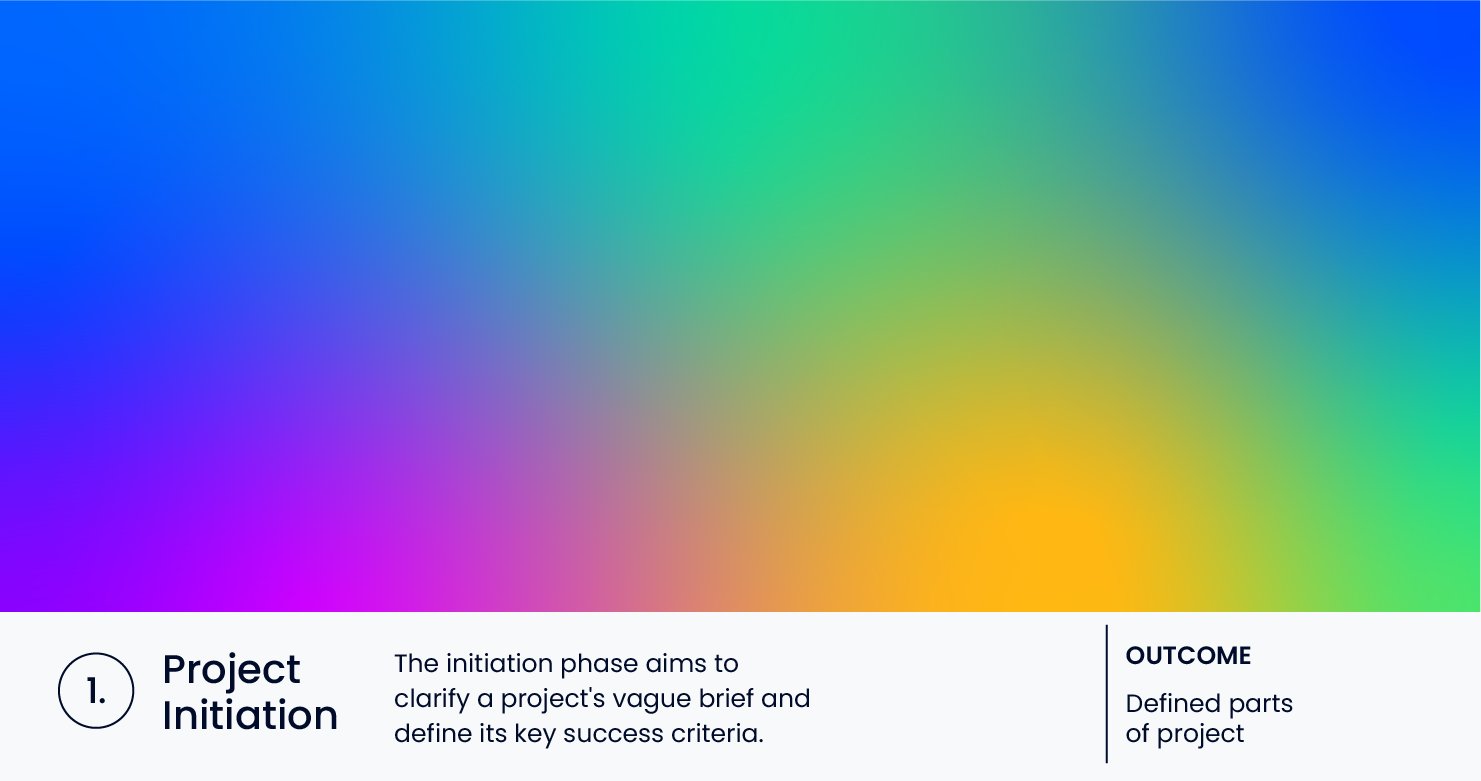
Initiating the first phase of the project life cycle is all about doing a project kickoff meeting with your team and with the client, and getting their commitment to start the project.
You bring together all of the available information in a systematic manner to define the project’s scope, cost, and resources. The goal of the initiation phase is to take the (sometimes) loose brief of a project and understand what the project needs to do and achieve in order to be successful.
That usually necessitates identifying the project stakeholders and making sure they all share the same perception of what the project is and the specific business case—the problem that the project is trying to solve.
It’s during this project initiation phase that you also decide whether delivering the business case is feasible. As a project manager, you will need to conduct adequate research to determine the project goals and then propose a solution to achieve them.
Key Steps During Project Initiation
- Make a project charter: What is the vision, objective, and goal of this project?
- Identify the high-level scope and deliverables: What is the product or service that needs to be provided?
- Conduct a feasibility study: What is the primary problem and its possible solutions?
- Ballpark the high-level cost and create a business case: What are the costs and benefits of the solution?
- Identify stakeholders: Who are the people this project affects, how does it affect them, and what are their needs?
Typically for Prince2 or PMI methodologies, the above is summed up in a Project Initiation Document (PID), but in an agency, the information is usually captured in an initial statement of work (SoW).
2. Project Planning Phase
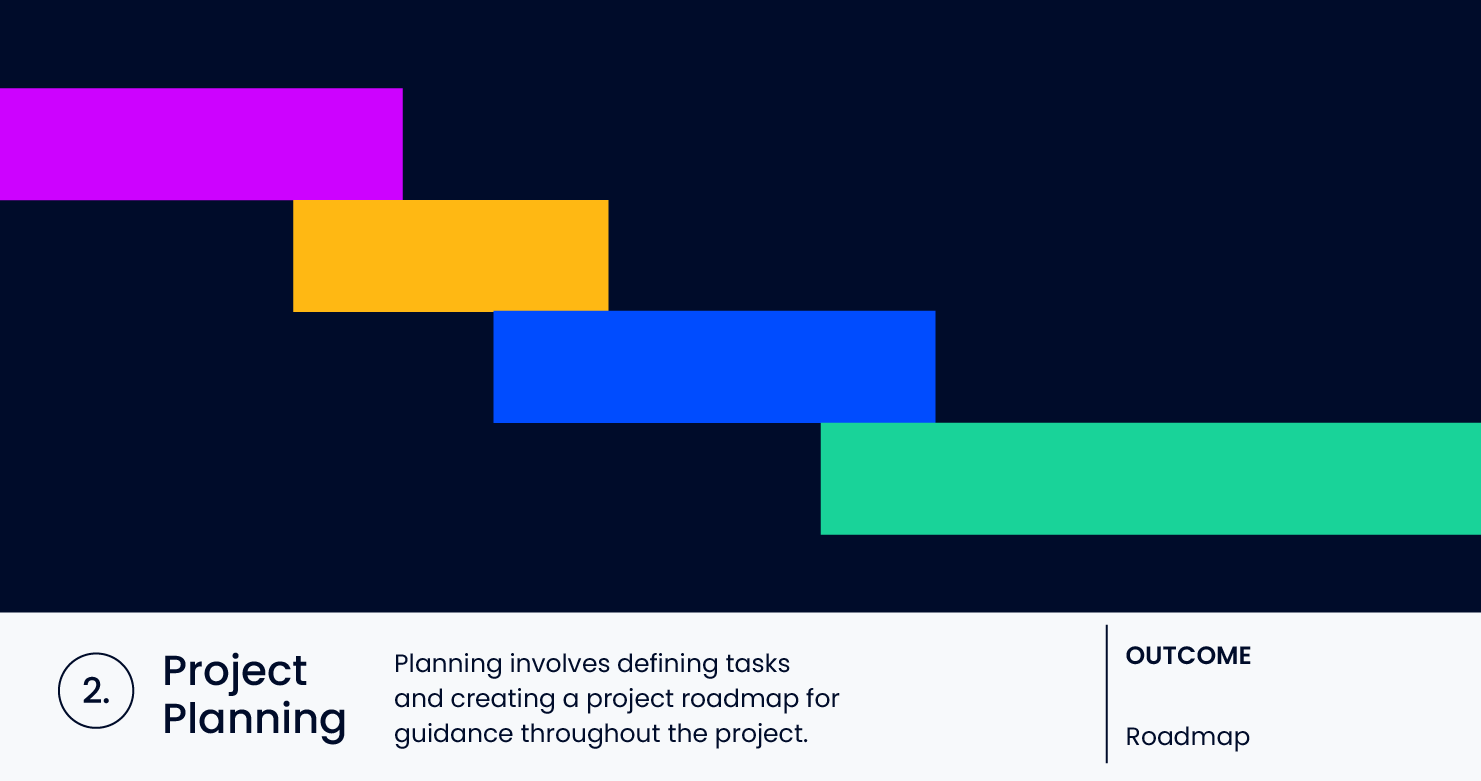
After receiving approval to proceed in the initiation phase, you can begin project planning, typically using a Gantt chart tool.
Planning is where you define all the work to be done and create the project roadmap that you follow for the remainder of the project. This is when you figure out how you’re going to perform the project and answer these questions:
- What exactly are we going to do?
- How are we going to do it?
- When are we going to do it?
- How will we know when we’re done?
During this project management step, you have to decide how you and your team will attain the goals of the project. It’s worth evaluating those goals with three criteria: what’s possible, passionate, and pervasive?
- Possible: Strive for something that is achievable. Ask yourself, does this solution match the budget? Does my team have the ability to do this? Do we have enough time? Setting unrealistic goals is setting yourself up for failure.
- Passionate: Projects are tough, so you want a team that is emotionally engaged in the project. Ask yourself, is this a project that your team can be passionate about? Is it something that can bring them together to collaborate and achieve the same goal? Even though it might be their job to do what you tell them to do, no one is going to invest into something they don’t think is worthwhile
- Pervasive: Does this have the potential to become a ground-breaking success? Is this something that is a complete solution to the problem that was given to you or is it really just a band-aid solution? Does it have the potential to be improved on, developed, and to become a permanent way of working?
I like this 3 Ps lens for goals, but you might also be familiar with the principle of setting CLEAR goals: collaborative, limited, emotional, appreciable, and refinable. Read more about CLEAR goals and their benefits over SMART goals.
The planning phase results in a project plan that outlines the activities, tasks, dependencies, and time frames, as well as costs. In addition, it’s prudent to develop a plan for resources, quality, risk, acceptance criteria, communication, and procurement.
Key Steps For Project Planning
- Create a project management plan: Identify the phases, activities, constraints, and project schedule, and create a project timeline with a work breakdown structure (WBS) and Gantt chart.
- Create a financial plan: Create a project budget and cost estimate, and a plan to meet your maximum cost, complete with allocations across resources and departments
- Create a resource plan: Build a great team and recruit and schedule the resources and materials needed to deliver the project in your resource management software
- Create a quality plan: Set your quality targets and measures
- Create a risk plan: Identify the possible risks, assumptions, issues, and dependencies; assign an owner; and develop a mitigation plan for how you will avoid/overcome them
- Create an acceptance plan: Assign criteria for what constitutes ‘done’ and ‘delivered’
- Create a communication plan: List your stakeholders and plan the communication cadence in your project communications tool
- Create a procurement plan: Find any 3rd party suppliers required and agree on terms
3. Project Execution Phase
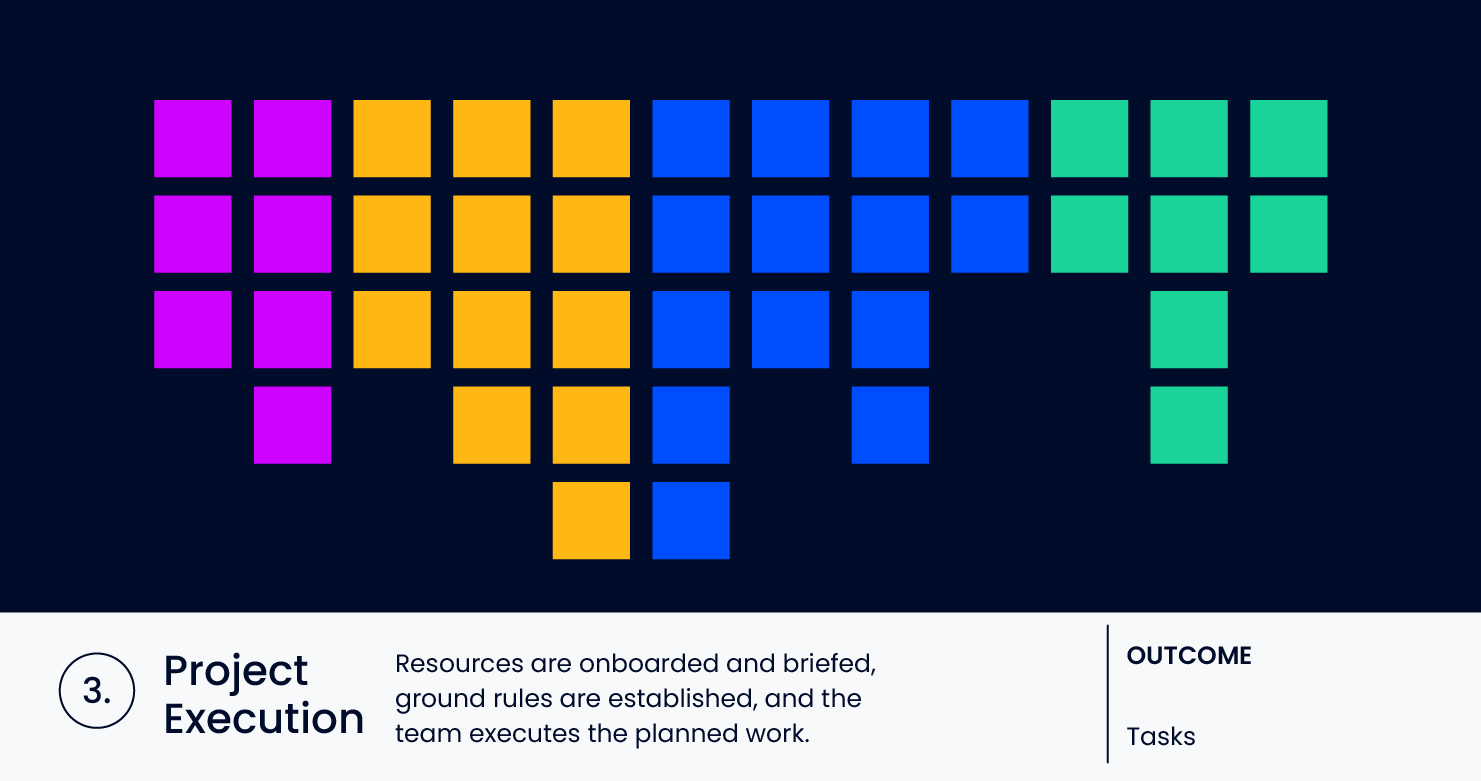
This is the part of the project life cycle where you finally get to execute on your awesome project plan. You bring your resources onboard, brief them, set the ground rules, and introduce them to one another. After that, everyone jumps in to perform the work identified in the plan. Easy peasy (in theory).
As the project manager, you shift from talking about a project and creating documentation to getting the green light to proceed with the execution phase. Now, you’re leading the team and managing them toward delivery. You’ll spend your time in briefings, meetings, and reviews, and keep the project on track as it moves through the project life cycle.
Key Steps For Project Execution
- Team leadership: Cast a vision for success and enable the team to deliver on it
- Create tasks: Clearly define what needs to be done and the criteria for each project task
- Task briefing: Ensure the team is clear about what they need to do, and when they need to do it by
- Client management: Work with the client to ensure deliverables are acceptable
- Communications: Ensure you’re informing and updating the right people at the right time through the right channel
4. Project Monitoring & Controlling Phase
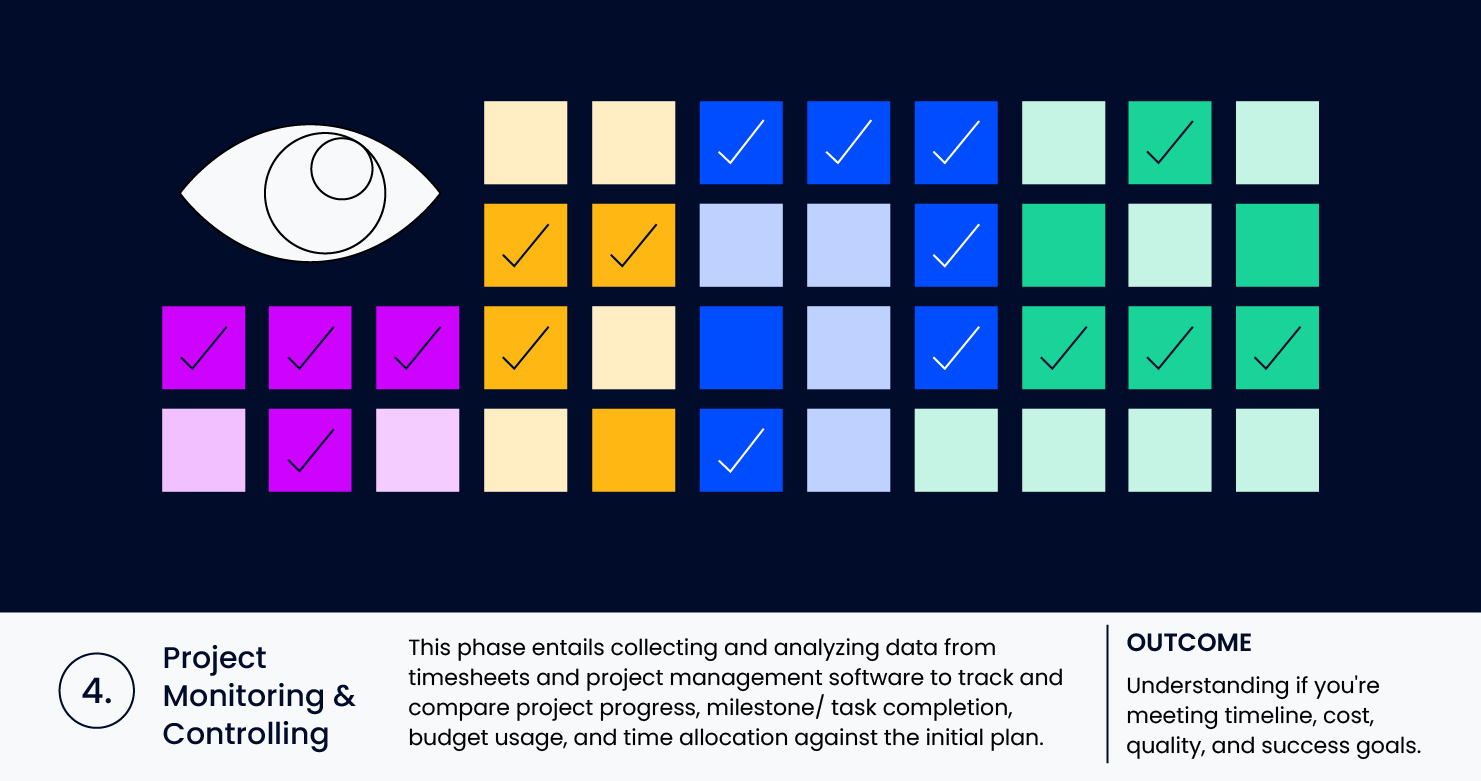
This project management step involves reporting on performance and monitoring and controlling the project.
That means ensuring the project is going according to plan, and if it isn’t, controlling it by working out solutions to get it back on track. As a project manager, you’ll be monitoring and controlling a project in some way throughout all of the project life cycle phases.
First, that means ensuring you capture the data (usually derived from timesheets and reports in your project management software) to track progress effectively against the original plan.
Second, it means taking the data and comparing overall project progress, milestone and task completion, budget spend, and time allocated in the original plan. By comparing the actuals against the plan, you can establish whether or not you’re hitting the objectives for timeline, cost, quality, and success metrics or key performance indicators (KPIs).
And when you realize that things aren’t quite going to plan (they rarely do), it’s figuring out the options for pivoting the project so that it still delivers something the client is happy with while meeting the budget, timeline, and quality constraints.
Pro-tip: usually that means reducing the scope of the project!
Key Steps For Project Monitoring And Controlling
- Cost & time management: Review timesheets and expenses to record, control, and track against the project’s budget, timeline, and tasks
- Quality management: Reviewing project deliverables and ensuring they meet the defined acceptance criteria
- Risk management: Monitor, control, manage, and mitigate potential risks and issues
- Acceptance management: Conduct user acceptance testing and create a reviewing system, ensuring that all deliverables meet the needs of the client
- Change management: When the project doesn’t go to plan, managing the process of acceptable changes with the client to ensure they’re happy with necessary changes
5. Project Closure Phase
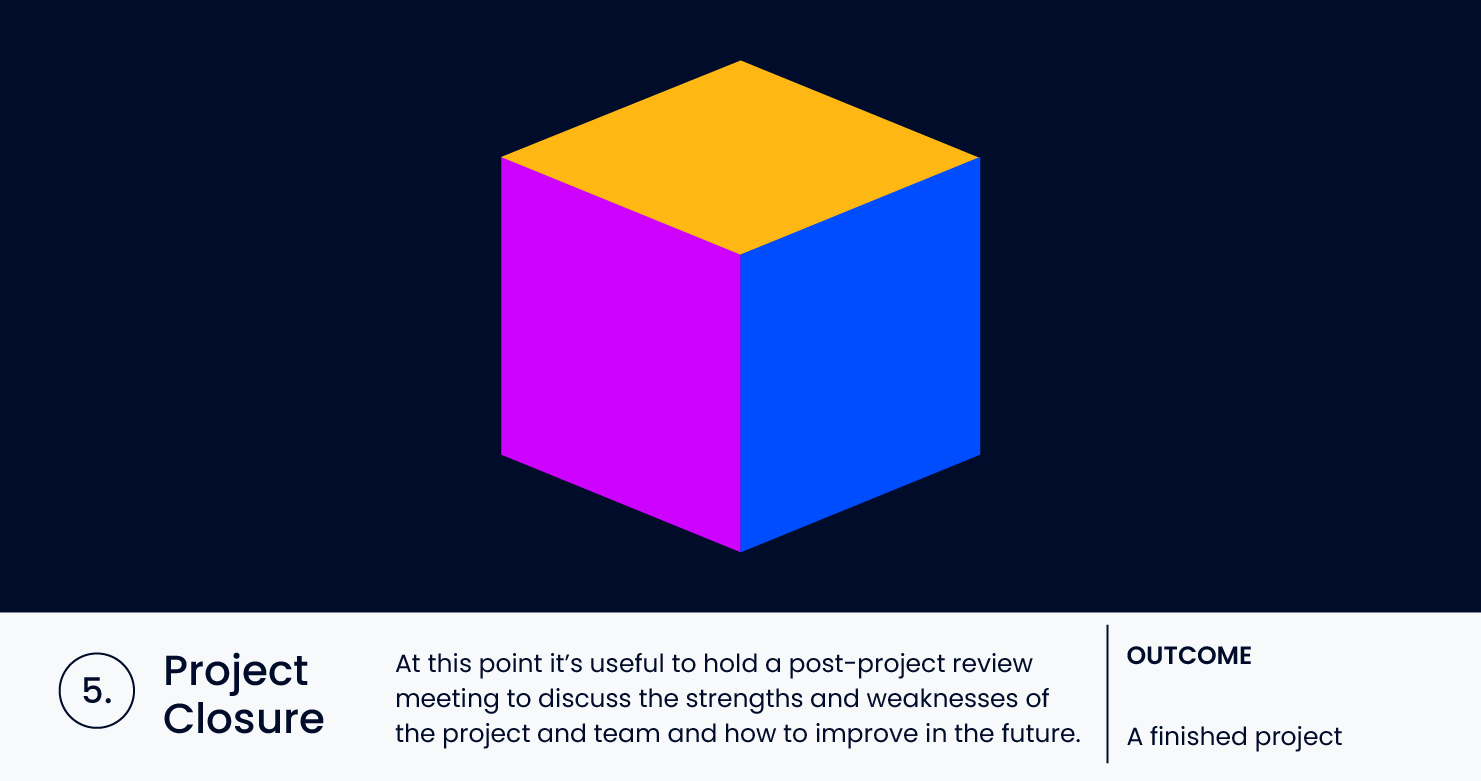
In the closing phase of the project life cycle, your project is essentially over and your job as a project manager comes to a close. But the project’s not over yet.
During this project closing step, before everyone forgets, it’s useful to hold a post-project review meeting or post-mortem to discuss the strengths and weaknesses of the project and team, what went wrong or didn’t go so well, and how to improve in the future.
This can be one of the most rewarding stages of project management, as it’s a great opportunity to recognize and acknowledge valuable team members and celebrate successes.
Key Steps For Project Closure
- Project performance analysis: This is an overall look at how well the project was managed, and whether the initial estimates of costs and benefits were accurate. Were there unforeseen risks? What issues arose and how well were they dealt with? Has the project plan been changed, and how?
- Team analysis: Did everyone do what they were assigned to do? Were they passionate and motivated enough? Did they stay thorough and accountable? Was the communication within the project team healthy and constructive?
- Project closure: Document the tasks needed to bring the project to an official end. This includes closing supplier agreements, signing off contracts, and handing in all the necessary project documentation.
- Post-implementation review: Write down a formal analysis of successes and failure, resulting lessons learned, and suggestions for the future. At the end of every successful project, you will learn that room for improvement always remains.

Why Is The Project Life Cycle Important?
While the project life cycle might not sound that interesting, it is important because it’s what we as project managers lead and facilitate.
The steps involved in any project are generally the same: define a project’s objectives, create a project plan to meet the objectives, and then make stuff happen to accomplish it. Different project managers or agencies may use slightly different terms to describe the project life cycle phases in various projects, but fundamentally, they’re pretty much the same.
A project always has to start somewhere: the problem that needs fixing needs to be defined. A solution to fixing that problem and an approach to doing it then has to be created.
That plan has to then be put into action, and then that plan has to be tracked to make sure it does what it’s supposed to. The project is then deployed, performance is evaluated, and the project is officially over.
The project life cycle provides project managers with steps to follow throughout projects. It defines where to start, and where to go next at each stage in the project. No matter how crazy things get, you’ll have a reliable structure to go back to and regroup on.
Ready To Go Beyond The Project Lifecycle?
The project life cycle is a small piece of a much larger digital project management picture. Get the full picture with our certificate program, Mastering Digital Project Management.
When The Project Life Cycle Gets Complex
The project life cycle is simple, right? No, of course not! Like most things in life, projects are complex and involve a large number of variables, along with plenty of grey area.
Get advice and help from 100s of other digital project managers by becoming a member and joining the conversation in Slack! You’ll also get access to 100+ templates, samples, and examples of project documents, which will save you time and increase your chances of project success.

